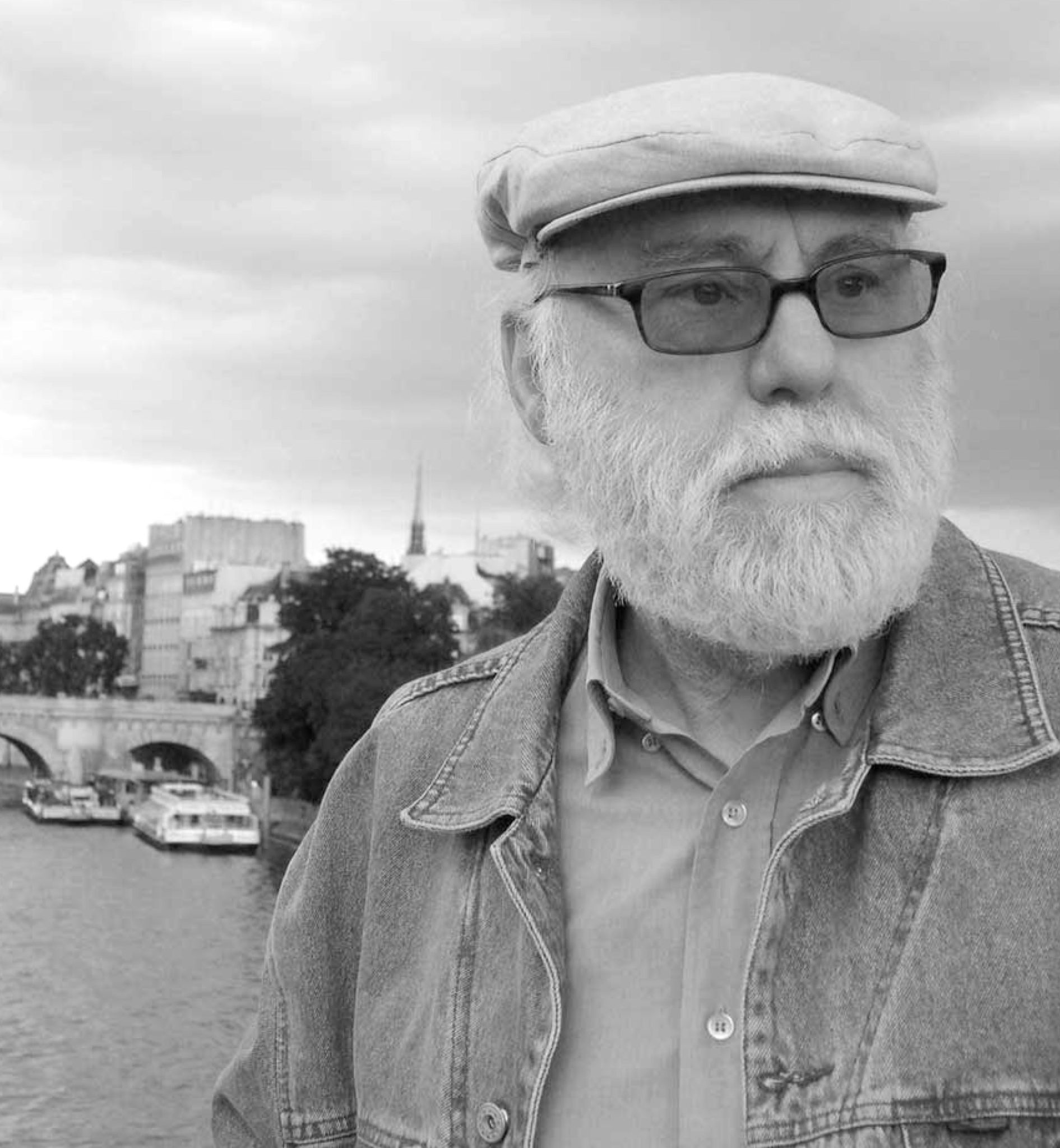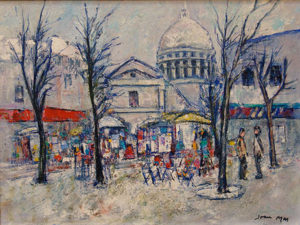BARCELONA, 1934 Joan Mas

His landscapes, still lifes, figures and other compositions flee from the simple naturalistic exercise of color to indulge in a constant and structured plasticity made up of fillings, qualities and resources of matter.
Master in the treatment of gray intonations, thanks to his proven love for cities such as Paris or Amsterdam, has started a good path towards the most vivid colors and he has found the current and accurate intonations.
BIOGRAPHY
Born in Barcelona in 1934, he studied drawing at the Llotja School of Arts and Crafts in Barcelona. He was also interested in other techniques such as engraving, pottery, fresco … In 1959 he moved to Paris where in 1968 he would finish his painting studies at the École Nationale Supérieure des Beaux Arts, in the workshop of Professor Roger Chastel. He also worked drawing at the School of the Grande Chaumière in Paris, where he breathed an alternative atmosphere. There is related with many artists. He was part of the Paseo de Gracia Group in Barcelona (where painters, journalists and writers gathered around the La Puñalada bar-restaurant to talk about exhibitions and projects related to art) since its foundation in 1981.
His first individual exhibition took place in Saint-Tropez, in 1962. Since then he has made numerous exhibitions in several countries in Europe (Spain, France, Italy …) and the United States. He has also participated in International Biennials and Salons. Among the numerous prizes obtained we can mention the Gold Medal of Belgium, of the Académie Européenne des Arts, in 1986. We also find his work in the Museum of Cuenca, the Bollène (France) and the Francesc Galí de Palamós Foundation.
His landscapes, still lifes, figures and other compositions flee from the simple naturalistic exercise of color to indulge in a constant and structured plasticity made up of fillings, qualities and resources of matter.
His painting has as a starting point a post-impressionism in love with the gray ranges and the humid atmospheres of Paris. However, his style assimilated influences from cubism, abstract art and new figuration, moving away from the conventional dogmas of landscape painting to give life to a remarkably personal language.
Joan Mas seems to have picked up the essence of the isms. It reaches synthesis by eliminating landscapes that are subsidiary and that is why we have the impression that their works are very structured and that a geometrically organized organization predominates in them. But, at the same time, all this search for the constructive essences of the landscape does not take away its images from a confrontation with reality, always raised to its works and resolved with subtle nuances, where the post-impressionist findings are decisive.
Master in the treatment of gray intonations, thanks to his proven love for cities such as Paris or Amsterdam, he has started a good path towards the most vivid colors and he has found the current and correct intonations. Always measured and loving the balance between shapes and colors, it has opened up to more free sensations. In the same way that children who paint are creative within the patterns that the games have, he has also found more free and active ways to represent what he wants to convey with his painting. And this also applies, without ever force the situations, the new urban landscapes that now presents.
As Josep M. Cadena wrote in one of the criticisms dedicated to his work: (…) His dialogue grows serene and reasoned, but never lacking in passion. Cross completely in what he does and is fully sincere in the expression of emotions. He never wants to impose himself, although he always says his with total conviction. And correct.
JOAN MAS, FROM THE FIRST IMPULSE TO THE RATIONALITY OF THE WORK
by Josep M. Cadena
The painter Joan Mas, well known by the regulars of this Rusiñol Gallery, since, if my information is accurate, he has been exhibiting since February 1994 – the previous sample was in October 2008 – he is once again offering us an excellent set of paintings in which it combines visions of marinas, fishing villages, scenes of children playing and urban spaces, with a clear sense of social balance and spiritual finesse.
Born in Barcelona in 1934, from a very young age he felt the need for painting and, determined to try for himself and without any help his talents, he went to Paris in 1959, since the capital of France was still the epicenter of European plastic art. He struggled and managed to find in his gray, the color of ashes and mists, but also of dreams and first contacts with the reality that surrounds every human being when he comes to the world and learns to look, a language of his own.
Aware that the appearances of Nature in which we belong offer color to attract, Joan Mas opted for gray as a synthesis of all the ranges, convinced that he had to express two fundamental ideas: the creativity that spontaneously manifests itself in the forms of play that children practice among themselves and the sense of union that human society establishes in most of its achievements. And in this way, the central gray in which it moves becomes a kind of chromatic spur, which while remaining the absolute center of reasoning, projects us harmoniously towards the four cardinal points that are balanced within each of its works.
The figuration of Joan Mas responds more to the spirit of the people and the environments that surround them than in the materiality of the figures and things. It represents what he sees, but he does it because he feels human proximity in each individual action and also in collective activities. Painter and also drawer -many of his paintings start from the study of the line and the sets, collected in drawings that I know him and that will agree that someday public-, he moves by the momentum of every moment he finds, but he knows how to organize their first sensations and develop them in works that grow internally and far exceed the temporality of the instants. Hence, the present exhibition, true to his career, brings the novelties that always emerge from the works well thought out and well done.

